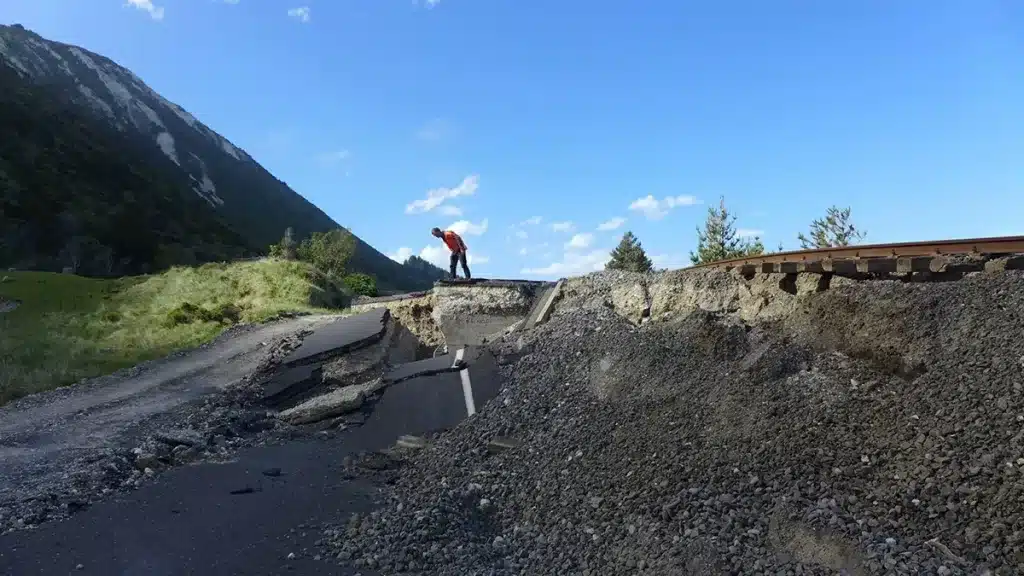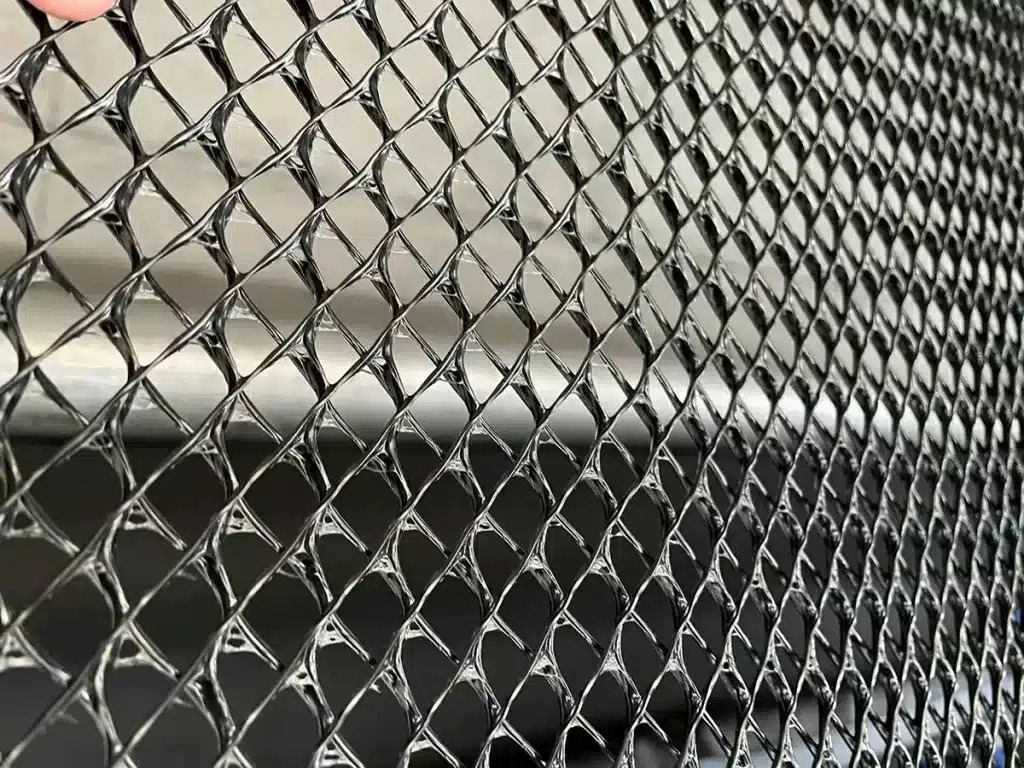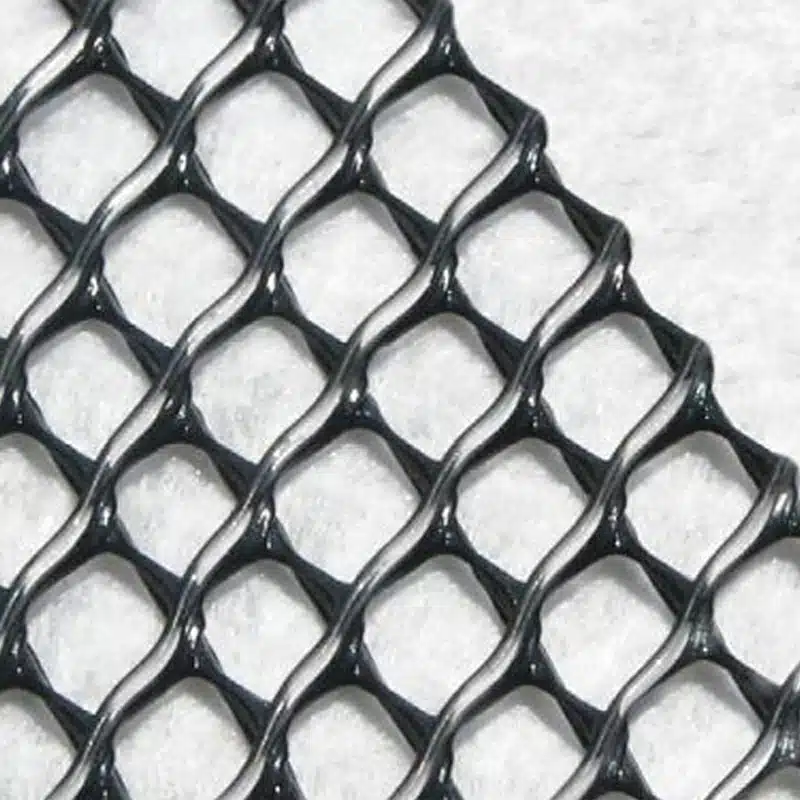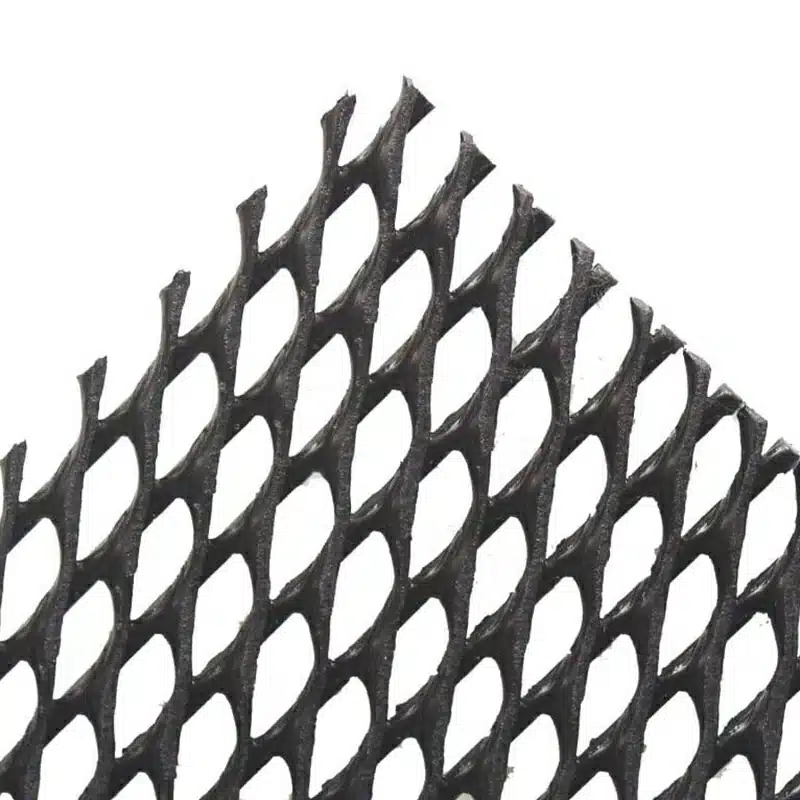+86-159 9860 6917
info@geofantex.com
geofantex@gmail.com
+86-400-8266163-44899
This article explores the critical role of geonets in landslide prevention. We delve into the fundamentals of geonets, their applications, and how they contribute to mitigating landslides. If you’re looking to enhance your knowledge about geonets and their significance in slope stability, this article is your guide.

What are geonets, and their role in preventing landslides?
Geonets are a type of geosynthetic material used in civil engineering, specifically for erosion control and slope stabilization. They are made from high-density polyethylene (HDPE) or similar materials and have a net-like structure, which allows them to be both lightweight and durable.
Their primary role in preventing landslides or slope failures is to provide reinforcement and improve drainage. Here’s how they work:
- Slope Reinforcement: The interlocking structure of geonets helps to stabilize the soil by distributing loads across the slope. This prevents the soil from slipping or sliding, especially in areas with high moisture content or loose soil.
- Drainage: Geonets allow water to flow through them easily, which is critical in preventing landslides. When water accumulates in slopes, it can weaken the soil, increasing the risk of failure. By improving drainage, geonets reduce water buildup and thus minimize the pressure that can trigger a landslide.
- Soil Containment: The netting structure also helps keep soil in place, preventing erosion and protecting the slope from external forces like rain or wind. This is especially useful in areas where vegetation is sparse or hard to establish.
- Preventing Surface Erosion: They provide a foundation for other materials like soil or gravel to rest on, helping to prevent the surface from eroding due to water runoff or wind.
In summary, geonets serve to stabilize the slope, allow proper drainage, and prevent soil erosion—factors that are all crucial in reducing the risk of landslides. They are often used in combination with other geosynthetic materials like geotextiles or geogrids for even more effective stabilization.
What are geonets used for in areas at risk of landslides?
Geonets are versatile geosynthetic materials used in various applications, particularly in landslide-prone areas. Their primary functions include reinforcement, drainage, erosion control, and vegetation support. Here are some specific applications of geonets in areas susceptible to landslides:
- Slope Stabilization: Geonets are widely used for stabilizing steep slopes and embankments. By reinforcing the soil, they help in preventing the downward and outward movement that can lead to landslides. This is particularly important in areas with loose or weak soil structures.
- Drainage Systems: In landslide-prone areas, managing water content within the soil is crucial. Geonets can be used to create efficient drainage systems that reduce hydrostatic pressure and prevent waterlogging, which is a common trigger for landslides.
- Roadway and Railway Embankments: Roads and railways often traverse through or along hilly or mountainous terrain, where the risk of landslides is higher. Geonets can be used to reinforce the embankments along these transportation routes, ensuring their stability and safety.
- Erosion Control: Geonets are effective in controlling surface erosion caused by wind and water. In landslide-prone areas, preventing topsoil erosion is essential for maintaining slope stability.
- Retaining Walls: In some cases, geonets are used in conjunction with retaining walls to provide additional stability. They can be placed behind the retaining walls to aid in drainage and reduce the pressure exerted on the wall, thereby enhancing its effectiveness and longevity.
- Vegetative Growth Support: Geonets can be used to anchor soil and provide a stable base for vegetation on slopes. The roots of the vegetation further reinforce the soil and help in controlling erosion, while the vegetation itself can absorb excess moisture.
- Construction Projects: In construction projects located in landslide-prone areas, geonets can be used to stabilize the ground during and after construction. This is particularly important for large-scale projects like housing developments, commercial buildings, and infrastructure projects.
- Landfill Sites: Geonets are also used in landfill sites to stabilize slopes and manage drainage. Landfills often have steep slopes and are subject to heavy rain infiltration, making them susceptible to landslides.
- Riverbanks and Shorelines: In areas where riverbanks or shorelines are prone to landslides, geonets can be used to reinforce these areas and protect against erosion caused by water flow.
- Rehabilitation of Degraded Lands: In areas where land degradation has occurred due to mining, deforestation, or other activities, geonets can be part of the solution for rehabilitating these lands and preventing further landslides.
In all these applications, the choice to use geonets, along with the specific type and installation method, depends on various factors including soil type, slope gradient, climatic conditions, and the nature of the landslide risk. Proper design and installation are crucial for the effectiveness of geonets in landslide prevention and mitigation.

What sets geonets apart from other geosynthetics in landslide mitigation?
Geonets have distinctive properties that make them particularly useful in landslide mitigation compared to other geosynthetics:
| Structure and Durability | Geonets are made from interconnected ribs of polymer, forming a very open, grid-like structure. This design enables them to withstand high compressive loads and provides excellent in-plane drainage capability, which is crucial for landslide areas where water movement needs to be controlled. |
| Drainage Capabilities | The primary function of geonets in landslide mitigation is drainage. Their open structure allows water to flow through them easily, reducing hydrostatic pressure behind retaining structures and slopes, a key factor in preventing landslides. |
| Flexibility and Adaptability | Geonets can conform to irregular terrain, making them ideal for sloped landscapes where landslides are a risk. Their flexibility helps integrate them with other materials to create a composite system for improved stability. |
| Cost-Effectiveness | Compared to other geosynthetics like geotextiles or geomembranes, geonets can be more cost-effective for projects requiring large-scale drainage solutions due to their specific design and material usage. |
| Installation | Geonets are relatively lightweight and easy to install, which reduces labor costs and time, critical factors in large or emergency projects. |
In summary, geonets offer a specialized solution for drainage and stability in landslide-prone areas, distinguishing them from other geosynthetics that might focus more on separation, reinforcement, or barrier functions.
What are the benefits of geonets for landslide prevention in terms of environment and cost?
Advantages of Using Geonets for Landslide Prevention
Environmental Impact
- Soil Stabilization: Geonets help stabilize soil, preventing erosion and maintaining the natural landscape. They promote vegetation growth by providing support for roots, which enhances biodiversity.
- Water Management: Geonets improve drainage by facilitating water flow, and reducing waterlogging and hydrostatic pressure. This controlled water movement prevents sudden landslides, protecting ecosystems.
- Minimal Disruption: Installing geonets causes minimal disturbance to the environment compared to traditional methods like retaining walls. They blend into the natural environment, maintaining the area’s aesthetic and ecological balance.
Cost-Effectiveness
- Lower Installation Costs: Geonets are generally more affordable to install than concrete structures. They require less labor and heavy machinery, reducing overall costs.
- Long-Term Savings: The durability and low maintenance of geonets result in significant long-term savings. By preventing landslides effectively, they reduce the need for frequent repairs and replacements.
- Resource Efficiency: Geonets use fewer raw materials and generate less waste compared to traditional construction methods. This efficiency translates into lower costs and less environmental impact from material production and transportation.
Geonets provide an environmentally friendly and cost-effective solution for landslide prevention. Their ability to stabilize soil, manage water, and support vegetation growth makes them a sustainable option. Additionally, the lower installation and maintenance costs offer significant financial benefits, making geonets a preferred choice for many landslide-prone areas.
In conclusion, geonets are a valuable tool in landslide prevention and slope stabilization. Their unique properties, applications, and cost-effectiveness make them an essential component in the field of geotechnical engineering. By understanding the role of geonets, we can work towards safer and more environmentally friendly solutions for landslide-prone areas.



Get Free Sample
We’ll respond as soon as possible(within 12 hours)






















